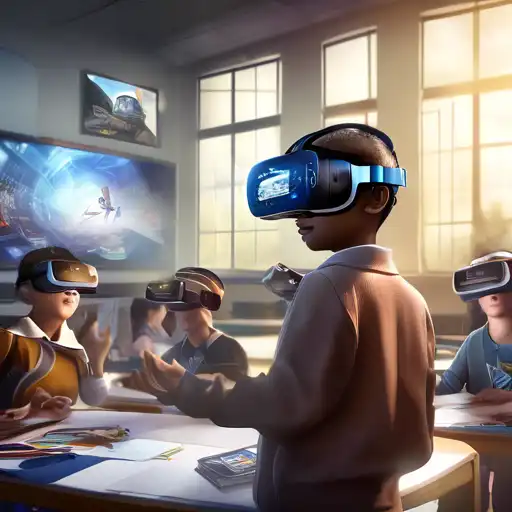Introduction to Virtual Reality in Education
Virtual Reality (VR) is revolutionizing the educational landscape, offering immersive learning experiences that were once beyond imagination. This technology transports students to virtual worlds, making learning more engaging, interactive, and effective. As we delve into the potential of VR for education, it's clear that we're standing on the brink of a new era in teaching and learning.
The Benefits of Virtual Reality for Students
VR in education provides numerous benefits, including enhanced engagement, improved retention rates, and the ability to simulate real-world scenarios. Students can explore historical events, dive into the human body, or even travel to outer space, all from the safety of their classroom. This hands-on approach caters to various learning styles, making education more inclusive.
Engagement and Motivation
One of the most significant advantages of VR is its ability to captivate students' attention. Traditional learning methods often struggle to maintain engagement, but VR's immersive nature ensures that students are not just passive recipients of information but active participants in their learning journey.
Improved Retention
Studies have shown that immersive learning experiences can significantly improve memory retention. By experiencing content firsthand, students are more likely to remember what they've learned, making VR an invaluable tool in education.
Implementing VR in the Classroom
Integrating VR into educational settings requires careful planning and consideration. Schools must assess their technological infrastructure, train educators, and select appropriate VR content that aligns with their curriculum. Despite these challenges, the potential rewards make VR a worthwhile investment for the future of education.
Choosing the Right VR Content
Not all VR experiences are created equal. Educators must select content that is not only engaging but also pedagogically sound. This means choosing applications that complement lesson plans and enhance learning objectives.
Training for Educators
For VR to be effectively integrated into the classroom, teachers need proper training. Understanding how to use VR technology and incorporate it into lessons is crucial for maximizing its educational benefits.
The Future of VR in Education
As VR technology continues to evolve, its applications in education will expand. Future developments could include more personalized learning experiences, greater accessibility, and even virtual classrooms that connect students from around the world. The possibilities are endless, and the impact on education could be profound.
Virtual Reality is not just a fleeting trend; it's a transformative tool that is reshaping how we think about education. By embracing VR, educators can provide students with unparalleled learning experiences that prepare them for the challenges of the future.
For more insights into innovative learning technologies, explore our education technology section.
